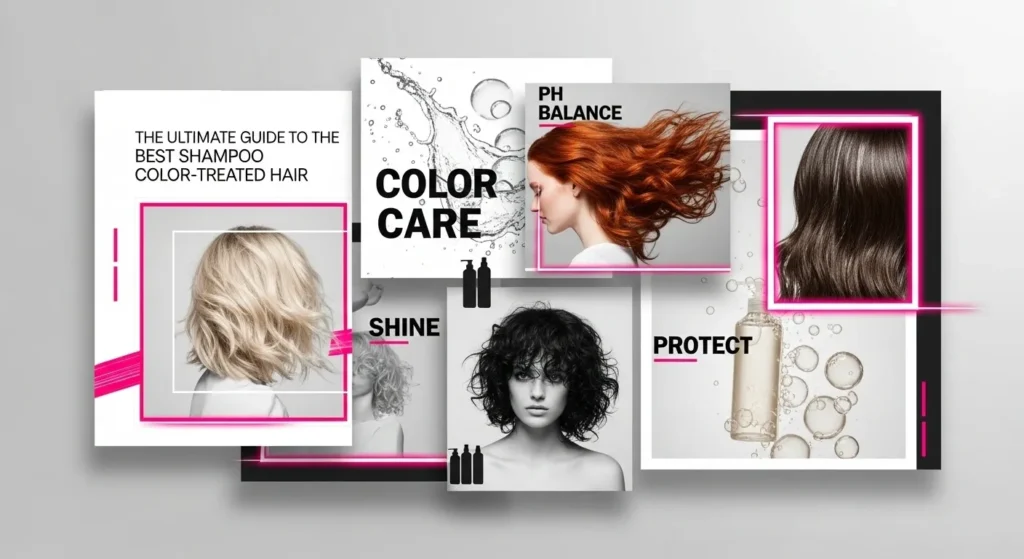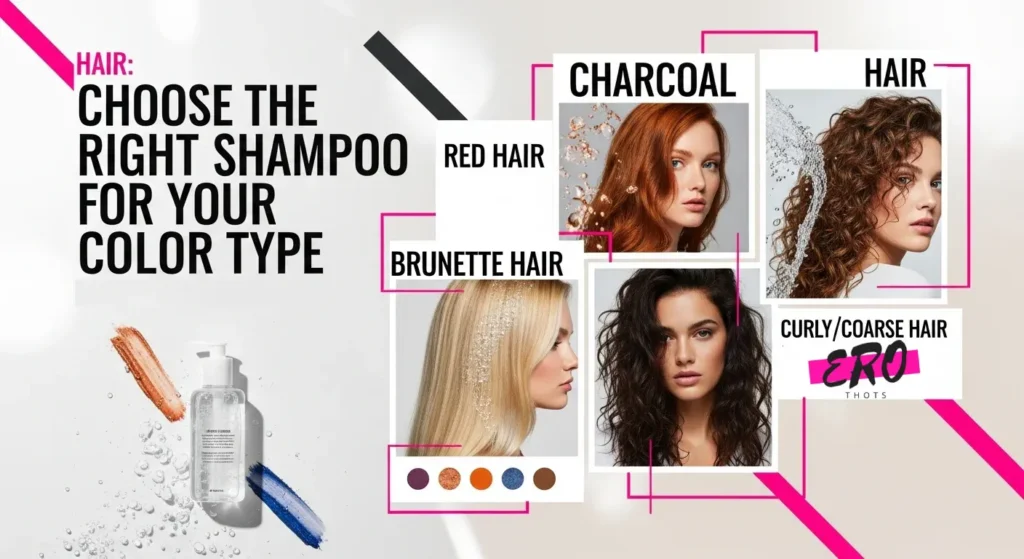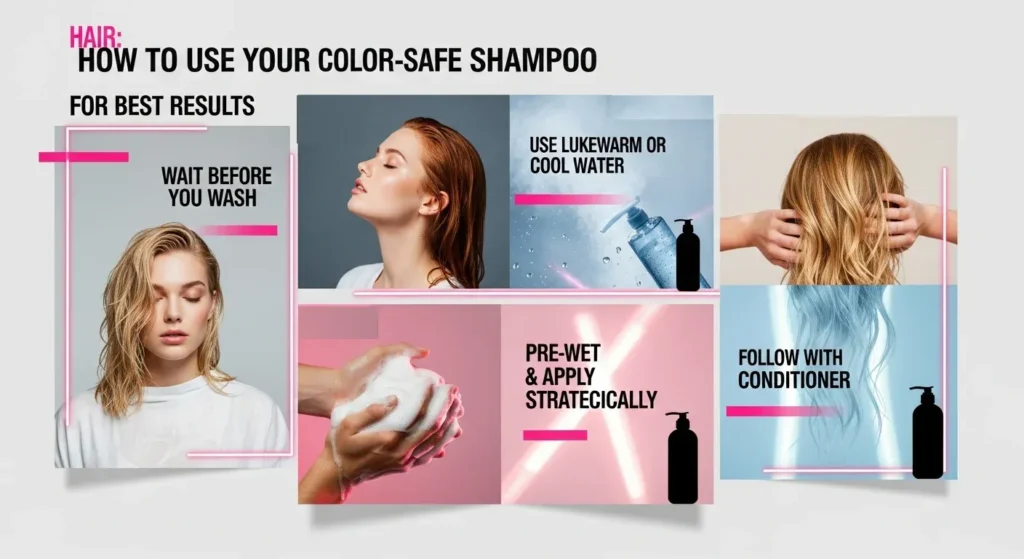
If your hair is dyed, highlighted, or otherwise color treated, the right shampoo can make or break how long your color stays fresh, radiant, and healthy. In The Ultimate Guide to the Best Shampoo for Color Treated Hair, you’ll learn how to choose a shampoo that protects your investment, what ingredients to look for (and avoid), and how to use it smartly.
Makes a Shampoo Truly “Best” for Color Treated Hair
Every shampoo claims to be “great for color-treated hair,” but many miss the mark. Let’s break down what really matters.
Gentle Cleansing vs Stripping Cleansing
A good color safe shampoo cleanses without being harsh. Many conventional shampoos contain sulfates (e.g. sodium lauryl sulfate or sodium laureth sulfate), which are strong detergents. They create rich lather but can also pull dye molecules out of your hair. Many beauty guides and brands recommend avoiding sulfates in color-safe shampoos.
However, not all sulfates are equally damaging, and in some cases you might want a mild sulfate to deal with buildup (especially if you use heavy products). The key is balance: a cleanser that’s effective yet kind to your color.
pH Balance and Cuticle Sealing
Your hair’s cuticle (outer layer) opens and closes depending on pH. A shampoo that’s balanced (slightly acidic, around 4.5–5.5) helps the cuticle remain slightly closed, which reduces color loss. Many shampoos targeting color-treated hair are pH-balanced to maintain the “seal.” (Some newer products even advertise “bond-repair + pH restoring” formulations.)
Color Protecting & Bond Building Ingredients
To go beyond just not damaging your hair, the best shampoos help your color last. Here are some beneficial ingredients and features to look for:
- Antioxidants and UV filters — These help block damage from free radicals and sun exposure.
- Moisturizers and humectants — Ingredients like glycerin, aloe, or hyaluronic acid help counteract the drying effect of dye.
- Proteins, peptides, keratin derivatives — These support hair strength and repair small internal damage caused by color processes.
- Bond-building technology — Some premium shampoos (e.g., Olaplex-style formulas) aim to rebuild internal disulfide bonds in hair, helping maintain structure and color. (Byrdie’s list highlights bond-building shampoos for colored hair)
Avoiding Color Thieves
Just as you want helpful ingredients, you want to avoid bad ones. Some common culprits to skip include:
- Harsh sulfates
- High-alkaline surfactants
- Heavy alcohols (that dry hair)
- Strong detergents or degreasing agents
- Harsh acids or bleaching agents
Also, repetitive use of clarifying shampoos can fade color if overdone. Use them thoughtfully.
Choose the Right Shampoo for Your Color Type

All colored hair isn’t the same. The ideal shampoo for a copper-red isn’t the same as for platinum blond or multi-tonal brunette. Here’s how to match:
For Blonde or Bleached Hair
Blonde hair tends to shift toward yellow or brassy tones. So many guides (and stylists) suggest using purple (violet) or blue tinted shampoos that counteract brassiness.
Look for these in your shampoo:
- Violet or blue pigments (in small, safe amounts)
- Hydrators (bleached hair is more porous)
- Bond-repair / strengthening agents
For Red & Warm-Toned Hair
Red fades fast. For red or copper tones:
- Use shampoos labeled for red or color-depositing ones
- Look for UV filters to protect against sunlight
- Use cooler water, shorter washes
For Brunette, Brown, or Dark Hair
Dark hair often needs less toning, but can lose brightness or pick up warmth. For brown tones:
- Use gentle color-safe cleansers
- Occasionally use blue or green-tinted shampoos to neutralize orange or brassy hues (some brunette ranges exist)
- Include shine-boosting ingredients like argan oil or silicones if your hair can tolerate them
For Curly, Coarse, or Porous Hair
Curly or textured hair often requires more moisture. Coloring can worsen dryness. So:
- Choose deeply hydrating, gentle formulas
- Avoid heavy silicones if you follow curly-care routines
- Use shampoo less often and rely more on co-washing or conditioning cleanses (though that’s beyond this post’s scope)
- Many guides on curly, colored hair echo this idea of extra moisture care.
How to Use Your Color Safe Shampoo for Best Results

Choosing the shampoo is only half the battle. How and when you use it matters.
Wait Before You Wash
Right after coloring, wait 48–72 hours before your first wash if possible. This gives the dye molecules a chance to settle. Some beauty blogs and hair care guides recommend this.
Use Lukewarm or Cool Water
Hot water opens the hair cuticle, which lets dye escape. Use lukewarm or cool water to seal the cuticle.
Pre Wet and Apply Strategically
Wet hair thoroughly before shampoo. Use a small amount of product and focus first at the scalp and roots (where most oils and residues accumulate). Gently work the lather downward; avoid scrubbing aggressively on the lengths, especially if hair is fragile or porous.
Rinse Thoroughly, Then Repeat If Needed
Ensure you rinse all shampoo out. If your hair feels lightly cleansed but not stripped, you can do a second quick shampoo just on the scalp, letting suds travel down.
Follow with Conditioner or Treatment
Always pair your shampoo with a color-safe conditioner or mask to lock moisture and maintain cuticle closure.
Limit Washing Frequency
Many color-care guides recommend washing only 2–3 times per week (or less) to prolong color life.
On non-wash days, you can use dry shampoo or scalp-refresh sprays (color-safe) to freshen up.
Use Clarifying Shampoos Sparingly
If you accumulate buildup from drying sprays, hard water minerals, or heavy styling products, use a clarifying shampoo but only occasionally (e.g. once a month). Infrequent use helps avoid excessive color fade.
FAQs
How often should I wash colored hair?
Try to keep it to 2–3 times per week (or less) to avoid fading.
Do clarifying shampoos ruin color?
They can be used too often. Use them only occasionally (e.g. monthly), and pick one that’s as gentle as possible.
Can I use my regular shampoo sometimes?
Occasionally, in emergencies, but relying on it regularly is risky. It probably lacks color-protecting features.
How long should I leave shampoo on my hair?
Usually just long enough to lather and rinse (30–60 seconds). Some specialty formulas (toning or bond-repairing) may ask for 1–2 minutes following their instructions.
Does water type (hard vs soft) matter?
Yes. Hard water has minerals that can dull color faster. If you have hard water, occasional use of a gentle chelating or clarifying treatment helps.
Final Thoughts
Coloring your hair is an investment in time, effort, and confidence. The right shampoo is not a small detail; it can either protect that investment or undermine it.
Use this guide to understand the reason behind color safe shampoo choices gentle cleansing, pH balance, color-locking ingredients, avoiding harm. Match shampoo to your hair type and color, use smart technique (cool water, not over-washing), and clarify carefully.
